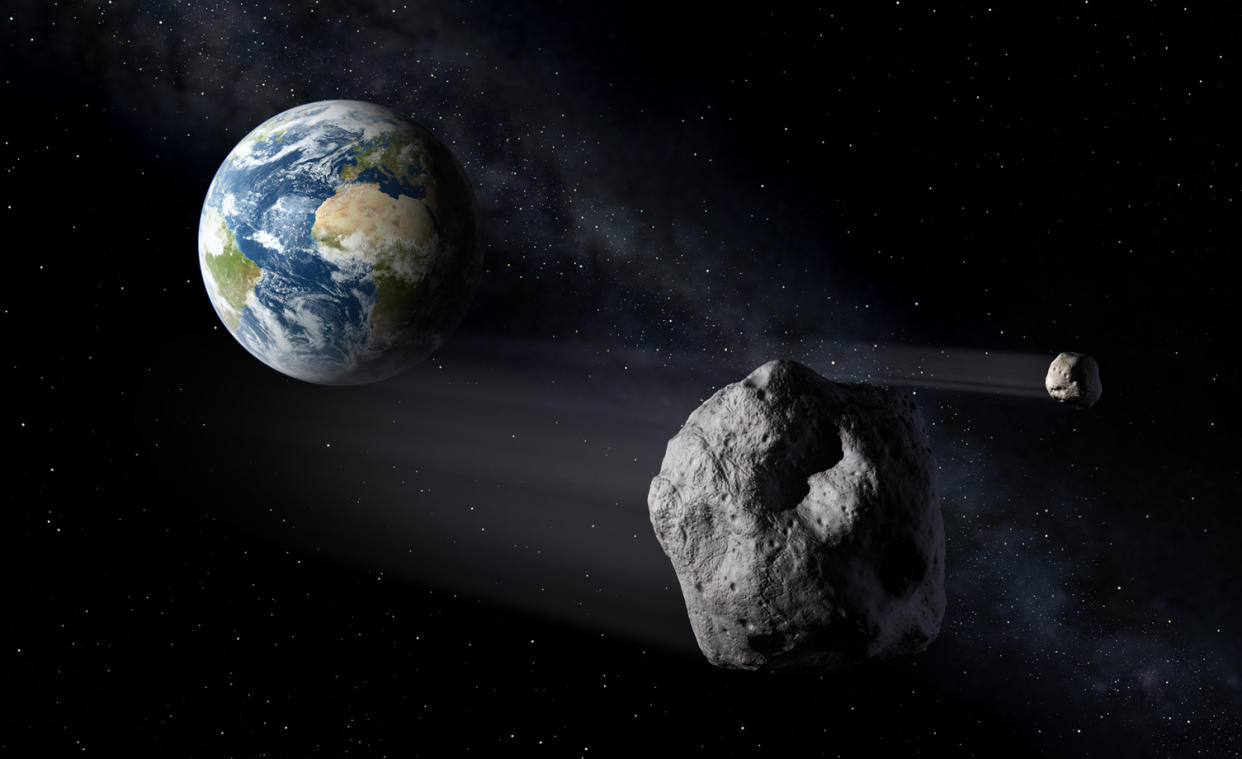US updates asteroid-defense strategy

The United States' National Science and Technology Council has updated the country's plan for dealing with potentially dangerous asteroids.
Earlier this month, the Council published a 38-page document laying out six goals for federal agencies aimed at strengthening our ability to detect, track and develop technologies to deflect hazardous near-Earth objects (NEOs), and increasing international preparedness for such events.
According to the report, millions of small objects circling the sun pass concerningly close to Earth's orbital plane. Many of these rocks end up taking the plunge into Earth's atmosphere but burn up before reaching the ground. Of chief concern are NEOs 33 feet (10 meters) wide or larger, for asteroids of that size tend to pack a pretty powerful punch.
Related: Asteroid apocalypse: How big must a space rock be to end human civilization?
The report cites the Johns Hopkins University Applied Physics Laboratory, which estimates that there are nearly 1,000 NEOs larger than 0.6 miles (1 kilometer) wide out there. Space rocks of this size would cause serious damage if they hit Earth, and about 5% of that NEO population remains unaccounted for.
From there, the numbers go up as the objects get smaller. The smaller the size class, the higher its abundance and undiscovered estimation. Approximately 25,000 potentially hazardous NEOs larger than 460 feet (140 m) are currently being tracked, along with about 230,000 in the 165-foot (50 m) class; less than 8% of this latter group are currently being tracked. In addition, there are millions of smaller objects that could "cause some surface damage" should they survive their atmospheric descent, according to the report.
Thankfully, none of the big NEOs already under humanity's watchful eye are expected to fly close enough to the planet to result in an impact. Currently, the closest pass of a dangerous NEO to Earth is expected in 2029, when the 1,100-foot-wide (335 m) asteroid Apophis will fly within 19,635 miles (31,600 km) of the planet's surface.
That's almost like getting grazed by a bullet. For perspective: The moon orbits Earth at an average distance of about 240,000 miles (385,000 km).
Apophis' 2029 approach is therefore going to be quite an event, and the updated planetary defense plan urges the aerospace and defense industries to take advantage of the asteroid's pass. Apophis presents "a serendipitous opportunity to further advance Earth's planetary defense through technology demonstrations and international collaboration," the report states.
Related stories:
— Potentially dangerous asteroids (images)
— This is what would happen if scientists found an asteroid heading to Earth
— Big asteroids hit Earth more frequently than thought, study suggests
But it's the countless NEOs we don't know about that pose the real threat. The report cites the 2013 asteroid impact over Chelyabinsk, Russia, which came out of a clear blue sky and injured more than 1,500 people.
In response to the looming threat of unexpected impact, and amidst an increasing technological ability to do something about it, the Outer Space Affairs office of the United Nations created the International Asteroid Warning Network (IAWN) and Space Mission Planning Advisory Group (SMPAG) in 2014. Both organizations aim to consolidate global observations in order to bolster NEO awareness and planetary defense. NASA followed suit in 2016 when it established the NEO-dedicated Planetary Defense Coordination Office (PDCO).
The six action plan goals listed in the updated action plan include enhanced detection, more accurate tracking and characterization and technological advancements in NEO deflection. Two of the goals are geared toward international cooperation and emergency global procedures. And another one urges United States federal agencies (for example, NASA and the Space Force) to continue their interagency efforts focused on planetary defense projects designed to thwart potential threats to Earth.
NASA's Double Asteroid Redirection Test (DART) was a project with that very objective. The DART mission successfully slammed a probe into an asteroid in September 2022 to demonstrate the ability to change a space rock's trajectory. The action plan also highlights upcoming programs, like the Vera C. Rubin Observatory and the NEO Surveyor space telescope, that will help us keep tabs on potentially dangerous asteroids.
Follow us on Twitter @Spacedotcom or on Facebook.

